Atlantic Puffin numbers on two islands off the coast of Scotland crashed from 28,000 pairs in 1999 to only a few thousand when an invasive plant called tree mallow established itself. The Scottish Sea Bird Centre has received £250,000 to remove the plant and encourage the birds to return to their nests.
Image: J. Cunningham/BBC News.
People Hurting Birds
Scientists in eastern China say they have succeeded in controlling the flight of pigeons with micro-electrodes planted in their brains, state media reported recently. Scientists at the Robot Engineering Technology Research Centre at Shandong University of Science and Technology said their electrodes could command the pigeons to fly right or left or up or down, Xinhua news agency said. "The implants stimulate different areas of the pigeon's brain, according to signals sent by the scientists via computer and force the bird to comply with their commands," Xinhua said.
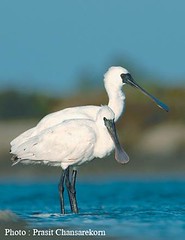 An important nature reserve for migratory birds in Hong Kong is being increasingly polluted by industrial and organic waste flushed down from southern China, a leading green group said on Tuesday. "The kind of pollution problems we're getting at Mai Po is a common one, right throughout China where you've got this very rapid urbanisation, " said Lew Young, manager of the WWF-run Mai Po nature reserve, on the north-western tip of Hong Kong, a stone's throw from the Chinese border city of Shenzhen. Mai Po and its lush wetlands straddle Shenzhen and Hong Kong and have for decades been an important wintering point for tens of thousands of waterbirds, including critically endangered species such as the black-faced spoonbill, Platalea minor (pictured, image: Prasit Chansarekorn). "It's unfortunate that we're stuck in the middle of these very urban areas that will keep urbanising," said Young.
An important nature reserve for migratory birds in Hong Kong is being increasingly polluted by industrial and organic waste flushed down from southern China, a leading green group said on Tuesday. "The kind of pollution problems we're getting at Mai Po is a common one, right throughout China where you've got this very rapid urbanisation, " said Lew Young, manager of the WWF-run Mai Po nature reserve, on the north-western tip of Hong Kong, a stone's throw from the Chinese border city of Shenzhen. Mai Po and its lush wetlands straddle Shenzhen and Hong Kong and have for decades been an important wintering point for tens of thousands of waterbirds, including critically endangered species such as the black-faced spoonbill, Platalea minor (pictured, image: Prasit Chansarekorn). "It's unfortunate that we're stuck in the middle of these very urban areas that will keep urbanising," said Young.
A millionaire stole eggs from nesting sites in Scotland to replenish bird stocks on his "private nature reserve". A court heard that Paul Zwetsloot, of St Neots, Cambridgeshire, was "obsessed" with ornithology and fined him £2,500 yesterday. The property dealer hatched chicks for his private lake after taking eggs from nests, magistrates in King's Lynn, Norfolk, were told.
People Helping Birds
Forest & Bird (BirdLife in New Zealand) have applauded the New Zealand government's decision to impose
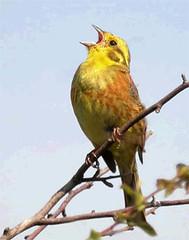 Over-wintered stubbles containing spilt seeds and a variety of weed seeds is the key to helping farmland birds through the winter, research by the Royal Society for the Protection of Birds concludes. The RSPB study says that cereal grains such as wheat and oats are the preferred winter food for house sparrows, Passer domesticus, corn buntings, Miliaria calandra, and yellowhammers, Emberiza citrinella (pictured, image: The British Library), on farmland while tree sparrows also eat sunflower hearts and rape seeds, and reed buntings consume maize.The research underlines the importance of green farming schemes through which farmers are paid to help wildlife. Amongst options farmers can choose are the provision of winter seed and the retention of over-winter stubbles, which means spilt grain and weeds seeds are not cleared as autumn crops are sown.
Over-wintered stubbles containing spilt seeds and a variety of weed seeds is the key to helping farmland birds through the winter, research by the Royal Society for the Protection of Birds concludes. The RSPB study says that cereal grains such as wheat and oats are the preferred winter food for house sparrows, Passer domesticus, corn buntings, Miliaria calandra, and yellowhammers, Emberiza citrinella (pictured, image: The British Library), on farmland while tree sparrows also eat sunflower hearts and rape seeds, and reed buntings consume maize.The research underlines the importance of green farming schemes through which farmers are paid to help wildlife. Amongst options farmers can choose are the provision of winter seed and the retention of over-winter stubbles, which means spilt grain and weeds seeds are not cleared as autumn crops are sown.
Endangered Birds
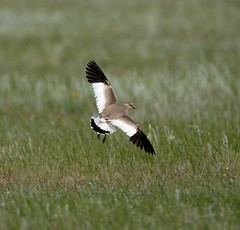 A small expedition team travelling across Syria today announced the discovery of the largest wintering population of one of Eurasia's most endangered birds, the Sociable Lapwing, Vanellus gregarius (pictured, image: Jan-Michael Breider). Previous estimates placed the global population of this Critically Endangered species at between 400 and 1500 individuals. However the expedition team reported seeing over 1200 birds in one day and over 1500 in total during the trip, all within a few grassland sites in Northern Syria."It's a finding that every ornithologist dreams of when starting out on an expedition like this." said Remco Hofland, a Dutch ornithologist who led the Syrian Sociable Lapwing Team, made up of Dutch and Syrian birdwatchers.
A small expedition team travelling across Syria today announced the discovery of the largest wintering population of one of Eurasia's most endangered birds, the Sociable Lapwing, Vanellus gregarius (pictured, image: Jan-Michael Breider). Previous estimates placed the global population of this Critically Endangered species at between 400 and 1500 individuals. However the expedition team reported seeing over 1200 birds in one day and over 1500 in total during the trip, all within a few grassland sites in Northern Syria."It's a finding that every ornithologist dreams of when starting out on an expedition like this." said Remco Hofland, a Dutch ornithologist who led the Syrian Sociable Lapwing Team, made up of Dutch and Syrian birdwatchers.
Nearly 80 red-headed cranes, which are listed as an endangered species in the world's Red Book, have been sighted in the Tram Chim National Park in the Mekong Delta province of Dong Thap. The number of this rare bird flocking to the park is expected to increase in the coming period due to the area's abundant food sources and well preserved environment, said Huynh The Phien, director of the national park, on March 1. However, he said, prolonged drought has put more than 3,000 ha of forests in the park at high risk from fires, possibly threatening the habitat of the bird. With thousands of hectares of cajeputs and swaps, the park is home to some 120 species of fresh-water fish, 40 amphibian-reptiles and 200 bird species, including 16 rare species. (VNA)
Equipped with an MP3 player downloaded with some catchy love songs, a N.C. Wildlife Resources Commission biologist takes to the pine forests of the Sandhills game lands. It isn't an afternoon getaway. The biologist is working and the MP3 player is playing mating songs of the Bachman's sparrow, Aimophila aestivalis, identified as a species of special concern in North Carolina. This secretive songbird is difficult to see, but males of the species will sing all day from low branches. Biologists are using MP3 players to elicit a response from breeding males, providing a more accurate count of breeding individuals and a better opportunity to understand their habitat needs. Bachman's sparrows face threats from predation and habitat loss, but benefit from forest management.
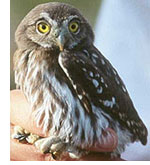 The cactus ferruginous pygmy-owl, Glaucidium brasilianum cactorum (pictured), population in northern Sonora, Mexico, has declined for the seventh year in a row, according to a new study produced by University of Arizona researcher Aaron Flesch. The report's findings run counter to assertions that pygmy owls are abundant across the border, which was the primary basis for the April 2006 decision to strip the owl of protection under the Endangered Species Act. Conservation groups are currently challenging this decision in court. "The pygmy owl's declining status in Mexico, combined with very small numbers in Arizona, shows clearly that the species should have remained an endangered species under the Endangered Species Act," said Noah Greenwald, conservation biologist with the Center for Biological Diversity. The study found that pygmy owls in northern Sonora have declined 4.4 percent per year, or 26 percent overall since the year 2000.
The cactus ferruginous pygmy-owl, Glaucidium brasilianum cactorum (pictured), population in northern Sonora, Mexico, has declined for the seventh year in a row, according to a new study produced by University of Arizona researcher Aaron Flesch. The report's findings run counter to assertions that pygmy owls are abundant across the border, which was the primary basis for the April 2006 decision to strip the owl of protection under the Endangered Species Act. Conservation groups are currently challenging this decision in court. "The pygmy owl's declining status in Mexico, combined with very small numbers in Arizona, shows clearly that the species should have remained an endangered species under the Endangered Species Act," said Noah Greenwald, conservation biologist with the Center for Biological Diversity. The study found that pygmy owls in northern Sonora have declined 4.4 percent per year, or 26 percent overall since the year 2000.
Avian Influenza
This week, H5N1 influenza has been diagnosed in Hong Kong, Kuwait, Myanmar, Nigeria, VietNam, and China.
Scientists and public health officials, wary that the H5N1 avian influenza virus could trigger an influenza pandemic, have looked to past pandemics, including the 1918 "Spanish Flu," for insight into pandemic planning. However, in a Journal of Infectious Diseases review article now posted online, David M. Morens, M.D., and Anthony S. Fauci, M.D., of the National Institute of Allergy and Infectious Diseases (NIAID), part of the National Institutes of Health, conclude that studies of the 1918 influenza pandemic, which killed some 50 to 100 million people around the globe, have so far raised more questions than they answer.
A comparison of the 1918 Spanish influenza and the H5N1 avian influenza viruses suggests that while the two viruses appear to trigger a similar abnormal immune response in animal models, there are distinct differences. Researchers from the University of Washington School of Medicine in Seattle report their findings recently at the ASM Biodefense and Emerging Disease Research Meeting. "The influenza pandemic of 1918-19 was responsible for at least 40 million deaths worldwide. Recent experiments in mouse and nonhuman primates have suggested a central role of the host immune response in 1918 and H5N1 disease severity," says John Kash, a lead researcher on the study.
Streaming Birds
 On BirdNote, for the week of March 5, 2007: Monday, the duet of the Grey-breasted Wood-Wren, Henicorhina leucophrys; Tuesday, migration of the Rufous Hummingbird, Selasphorous rufus; Wednesday, "Why a Gorget Glitters"; Thursday, the Brown Kiwi, Apteryx mantelli; Friday, How the kiwi lost its wings, the Maori myth. BirdNotes transport the listener out of the daily grind with two-minute vignettes that incorporate the rich sounds of birds provided by Cornell University and by other sound recordists, with photographs and written stories that illustrate the interesting -- and in some cases, truly amazing -- abilities of birds. Some of the shows are Pacific Northwest-oriented, but many are of general interest. BirdNote can be heard live, Monday through Friday, 8:58-9:00AM in Western Washington state and Southern British Columbia, Canada, on KPLU radio and now also in North Central Washington state on KOHO radio. All episodes are available in the BirdNote archives, both in written transcript and mp3 formats, along with photographs. Listener ideas and comments are welcomed. [rss].
On BirdNote, for the week of March 5, 2007: Monday, the duet of the Grey-breasted Wood-Wren, Henicorhina leucophrys; Tuesday, migration of the Rufous Hummingbird, Selasphorous rufus; Wednesday, "Why a Gorget Glitters"; Thursday, the Brown Kiwi, Apteryx mantelli; Friday, How the kiwi lost its wings, the Maori myth. BirdNotes transport the listener out of the daily grind with two-minute vignettes that incorporate the rich sounds of birds provided by Cornell University and by other sound recordists, with photographs and written stories that illustrate the interesting -- and in some cases, truly amazing -- abilities of birds. Some of the shows are Pacific Northwest-oriented, but many are of general interest. BirdNote can be heard live, Monday through Friday, 8:58-9:00AM in Western Washington state and Southern British Columbia, Canada, on KPLU radio and now also in North Central Washington state on KOHO radio. All episodes are available in the BirdNote archives, both in written transcript and mp3 formats, along with photographs. Listener ideas and comments are welcomed. [rss].
Miscellaneous Birds
"This Week at Hilton Pond" for 8-14 February 2007 includes lots of info about this year's trip and participants, as well as a ton of photos of tropical wonders we were privileged to observe. Of particular interest may be the capture of one male Ruby-throated Hummingbird that yielded information they believe is new to science. This photo-heavy installment may load slowly -- especially if traffic is high -- so please be patient. Since the authors were at Hilton Pond for part of the week, they also include substantial lists of birds banded and recaptured at York -- including an ancient male Northern Cardinal.
Would you like a March calendar -- featuring a parrot -- for your desktop? If so, please download this calendar here.
This site has 3D pictures along with mini movies showing the bird skeleton in rotating in 360 degrees.
The University of California-Davis scientists said brainmaps.org features the highest resolution whole-brain atlases ever constructed, with more than 50 terabytes of brain image data allowing users to explore the brains of humans and a variety of other species at an unprecedented level of detail. The Web site also includes a suite of free, downloadable tools for navigating and analyzing brain data. "Many users have described it as a 'Google Maps' of the brain," said Shawn Mikula, a postdoctoral researcher at the University of California-Davis who is first author of a paper describing the work.
.
The Fine Print: Thanks to Mike, Biosparite, Ian, Diane, Jeremy, Ellen and Ron for sending story links. Thanks in advance to Ian for catching my typos; as you probably know by now, I put a few typographical errors in these documents just so Ian can find them! The featured image appears here with the kind permission of the photographer, so please contact him if you also wish to purchase this or other of his images. Other images are resized and are either linked from the news story that they accompany or they are credited and linked back to the photographer.
What is the point of Birds in the News? I publish BITN each week because I want to increase people's awareness of the importance of birds in our everyday lives. Birds represent many things to us; beauty, freedom, music, wildness. But everywhere, birds are coming under increasing pressure for their very survival, and by linking to news stories about birds, I hope to make the smallest impression upon the public and the mainstream media, as well as our decision-makers, that birds are an important feature of our everyday lives, that there are so many reasons that we could not do without them.
tags: Birds in the News, ornithology, birds, avian, newsletter

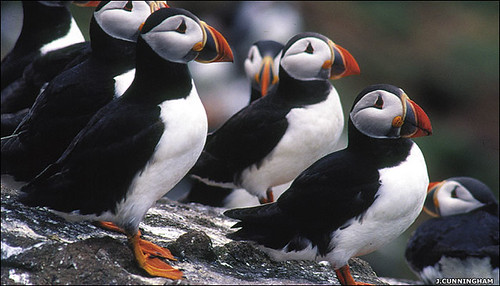

Oh Thank-you for the calendar link - I really needed one and right on my desktop is perfect! Another "GREAT" issue of BITN! My mondays are sooo much better after BITN is posted. :o)
Great collection, but please close the open bold/strong tag.
As the above poster says, an issue of BITN achieves the near-impossible: to make of Mondays a looked for day.
I would put chinese pigeon experiment on the "People Hurting Birds" section. It seems so wrong.
Another great Birds in the News. Atlantic puffins are great. when I lived in York, I would have an annual pilgrimage to visit Flamborough Head to see them and other seabirds.
Thanks
There was another bird die off in Austin this week. About 50 pigeons and grackles were found in central Austin. There was no cold snap to blame the deaths on this time.